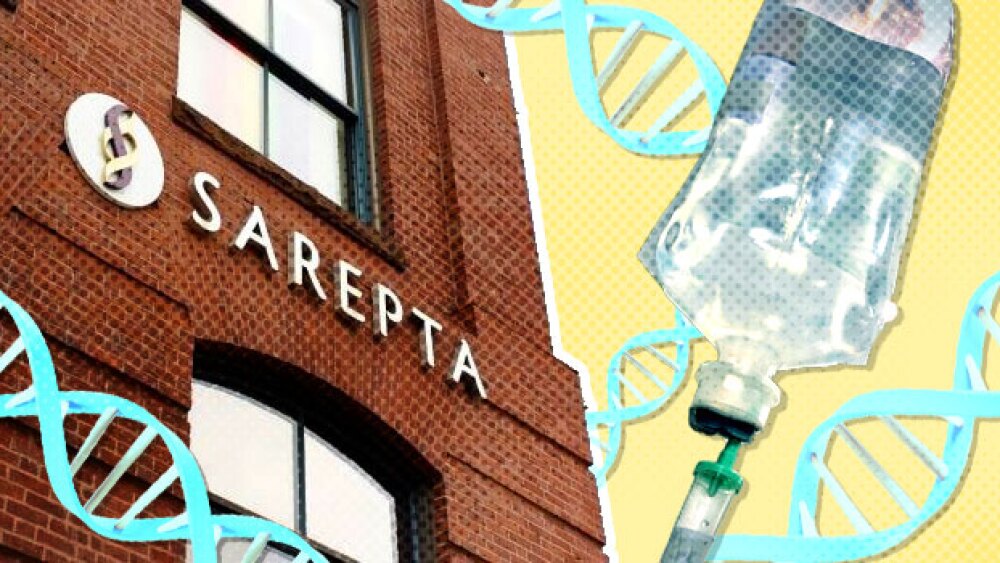Gamida Cell Completes Rolling Biologics License Application Submission to the FDA for Omidubicel.
- Omidubicel is a first-in-class, advanced NAM-enabled stem cell therapy candidate being evaluated as the first potential allogeneic advanced cell therapy donor source for patients with blood cancers in need of a transplant –
- Omidubicel has Orphan Drug Designation and Breakthrough Therapy Designation -
BOSTON--(BUSINESS WIRE)-- Gamida Cell Ltd. (Nasdaq: GMDA), the leader in the development of NAM-enabled cell therapy candidates for patients with hematologic and solid cancers and other serious diseases, today announced completion of the rolling Biologics License Application (BLA) submission to the U.S. Food and Drug Administration (FDA) for omidubicel for the treatment of patients with blood cancers in need of an allogenic hematopoietic stem cell transplant.
“The BLA submission marks an important milestone for both Gamida and the transplant community, as omidubicel has the potential to be the first approved advanced cell therapy product for allogeneic stem cell transplantation,” said Julian Adams, Ph.D., Chief Executive Officer of Gamida Cell. “Completion of this BLA submission is a key inflection point in our mission to deliver a new treatment option for patients with blood cancers. We look forward to working closely with the FDA to bring this potentially important therapy to patients.”
The FDA has 60 days to determine whether the BLA for omidubicel is acceptable for filing. The omidubicel BLA is supported by the statistically significant results from Gamida Cell’s pivotal Phase 3 study, the results of which were published in Blood, the official journal of the American Society of Hematology. For the study’s primary endpoint, the median time to neutrophil engraftment in patients with hematologic malignancies undergoing allogeneic bone marrow transplant receiving omidubicel compared to standard umbilical cord blood (UCB), the median time to neutrophil engraftment was 12 days for patients randomized to omidubicel compared to 22 days for the comparator group (p < 0.001).
In key secondary endpoints of this Phase 3 study: platelet engraftment was significantly accelerated [55 percent of patients randomized to omidubicel achieving platelet engraftment by day 42, compared to 35 percent for the comparator (p = 0.028)]; the rate of infection was significantly reduced [cumulative incidence of first grade 2 or grade 3 bacterial or invasive fungal infection for patients randomized to omidubicel of 37 percent, compared to 57 percent for the comparator (p = 0.03)]; and hospitalization in the first 100 days after transplant was significantly reduced [median number of days alive and out of hospital for patients randomized to omidubicel of 61 days, compared to 48 days for the comparator (p = 0.005)]. Omidubicel was generally well tolerated in the Phase 3 study.
The full Blood manuscript is available here: https://ashpublications.org/blood/article/doi/10.1182/blood.2021011719/476235/Omidubicel-Versus-Standard-Myeloablative-Umbilical.
About Omidubicel
Omidubicel is an advanced cell therapy candidate developed as a potential life-saving allogeneic hematopoietic stem cell (bone marrow) transplant for patients with blood cancers. Omidubicel demonstrated a statistically significant reduction in time to neutrophil engraftment in comparison to standard umbilical cord blood in an international, multi-center, randomized Phase 3 study (NCT0273029) in patients with hematologic malignancies undergoing allogeneic bone marrow transplant. The Phase 3 study also showed reduced time to platelet engraftment, reduced infections and fewer days of hospitalization. One-year post-transplant data showed sustained clinical benefits with omidubicel as demonstrated by significant reduction in infectious complications as well as reduced non-relapse mortality and no significant increase in relapse rates nor increases in graft-versus-host-disease (GvHD) rates. Omidubicel is the first stem cell transplant donor source to receive Breakthrough Therapy Designation from the FDA and has also received Orphan Drug Designation in the US and EU.
Omidubicel is an investigational therapy, and its safety and efficacy have not been established by the FDA or any other health authority. For more information about omidubicel, please visit https://www.gamida-cell.com.
Market Opportunity
In 2019, approximately 8,000 patients who were 12 years old and up with hematologic malignancies underwent an allogeneic stem cell transplant.1 Unfortunately, it is estimated that another 1,200 patients were eligible for transplant but could not find a donor source.2 Omidubicel, if approved, has the potential to improve outcomes for patients based on transplanter feedback and to potentially increase access for patients to get to transplant. Omidubicel, if approved, has the potential to treat approximately 2,000 – 2,500 patients each year in the U.S.
About NAM Technology
Our NAM-enabling technology is designed to enhance the number and functionality of targeted cells, enabling us to pursue a curative approach that moves beyond what is possible with existing therapies. Leveraging the unique properties of NAM (nicotinamide), we can expand and metabolically modulate multiple cell types — including stem cells and natural killer cells — with appropriate growth factors to maintain the cells’ active phenotype and enhance potency. Additionally, our NAM technology improves the metabolic fitness of cells, allowing for continued activity throughout the expansion process.
About Gamida Cell
Gamida Cell is pioneering a diverse immunotherapy pipeline of potentially curative cell therapy candidates for patients with solid tumor and blood cancers and other serious blood diseases. We apply a proprietary expansion platform leveraging the properties of NAM to allogeneic cell sources including umbilical cord blood-derived cells and NK cells to create therapy candidates with potential to redefine standards of care. These include omidubicel, an investigational product with potential as a life-saving alternative for patients in need of bone marrow transplant, and a line of modified and unmodified NAM-enabled NK cells targeted at solid tumor and hematological malignancies. For additional information, please visit www.gamida-cell.com or follow Gamida Cell on LinkedIn, Twitter, Facebook or Instagram at @GamidaCellTx.
Cautionary Note Regarding Forward Looking Statements
This press release contains forward-looking statements as that term is defined in the Private Securities Litigation Reform Act of 1995, including with respect to timing of initiation and progress of, and data reported from, the clinical trials of Gamida Cell’s product candidates (including omidubicel), anticipated regulatory filings (including the timing of submission of the BLA for omidubicel to the FDA), commercialization planning efforts, and the potentially life-saving or curative therapeutic and commercial potential of Gamida Cell’s product candidates (including omidubicel), and Gamida Cell’s expectations for the expected clinical development milestones set forth herein. Any statement describing Gamida Cell’s goals, expectations, financial or other projections, intentions or beliefs is a forward-looking statement and should be considered an at-risk statement. Such statements are subject to a number of risks, uncertainties and assumptions, including those related to the impact that the COVID-19 pandemic could have on our business, and including the scope, progress and expansion of Gamida Cell’s clinical trials and ramifications for the cost thereof; clinical, scientific, regulatory and technical developments; and those inherent in the process of developing and commercializing product candidates that are safe and effective for use as human therapeutics, and in the endeavor of building a business around such product candidates. In light of these risks and uncertainties, and other risks and uncertainties that are described in the Risk Factors section and other sections of Gamida Cell’s Annual Report on Form 10-K, filed with the Securities and Exchange Commission (SEC) on March 24, 2022, as amended, and other filings that Gamida Cell makes with the SEC from time to time (which are available at http://www.sec.gov), the events and circumstances discussed in such forward-looking statements may not occur, and Gamida Cell’s actual results could differ materially and adversely from those anticipated or implied thereby. Although Gamida Cell’s forward-looking statements reflect the good faith judgment of its management, these statements are based only on facts and factors currently known by Gamida Cell. As a result, you are cautioned not to rely on these forward-looking statements.
1CIBMTR 2019 – allogeneic transplants in patients 12+ years with hematological malignancies.
2Gamida Cell market research
View source version on businesswire.com: https://www.businesswire.com/news/home/20220602005395/en/
Contacts
Courtney Turiano
Stern Investor Relations, Inc.
Courtney.Turiano@sternir.com
1-212-362-1200
Source: Gamida Cell Ltd.





